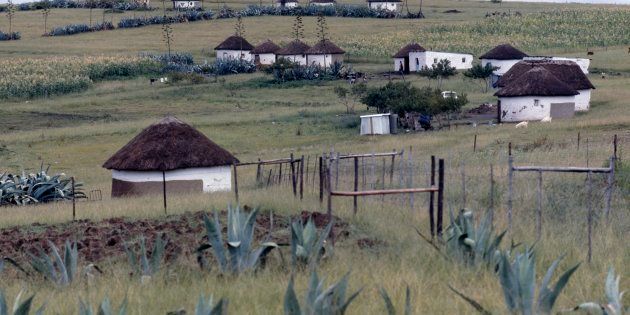
Last year was a challenging one for the South African agricultural sector, characterised by an El Niño-induced drought. Fortunately, this weather event appears to have passed and there is a promising production outlook for 2017.
During the December 2016 holidays, I took an agricultural tour of the Eastern Cape province, from the northern areas of the province - driving from Aliwal North, passing by Magwa tea plantation in the outskirts of Lusikisiki to the sugar cane fields in Bizana in the Alfred Nzo district.
The vegetation across the province painted a mixed picture. The northern areas had remained dry at the end of December 2016, posing a challenge to farmers across small towns and villages. Meanwhile, the central and southern regions of the province were reasonably green, almost typifying the normal summer vegetation. The conditions of field crops and veld across many towns were favourable.
The Eastern Cape province is not renowned for its agricultural vibrancy. In fact, it is commonly cited as one of the provinces with large under-utilized tracts of land under communal tenure, as well as a large number of smallholder farms.
Although this sub-optimal land use situation is true, it often overshadows some of the emerging positive trends in the province's agricultural industry such as the growing milk industry and a rise of new commercial farmers.
There is a rise of new commercial farmers, particularly in the grain and oilseed industries around the Matatiele, Ugie and Maclear towns.
Data from the Milk Producers' Organisation shows that in 2015, the Eastern Cape province was the leading producer of milk in the country, with approximately 30.6% share of South Africa's total milk production - a 3% increase from the previous year. Similar to other agricultural industries and provinces, the Eastern Cape's milk producers were negatively affected by the drought in 2016, but 2017 could bring some level of recovery.
Moreover, there is a rise of new commercial farmers, particularly in the grain and oilseed industries around the Matatiele, Ugie and Maclear towns. A number of these farmers benefited from the support of organised agriculture groups and private investors such as Grain SA, and Old Mutual Masisizane Fund, amongst others. Grain SA has been actively involved in the province through its Farmer Development Program, which focused on training and skills development. The Old Mutual Masisizane Fund, together with the government invested about R46 million in farming areas around Matatiele in 2016.
Alongside these developments, there is also an emergence of new agricultural firms, with a notable one being Matiele Grainco - a 100% black owned and directed grain group with a focus on agricultural mechanisation and transportation of grain across the Eastern Cape and Kwa-Zulu Natal provinces.
These developments are refreshing, but there are still a number of challenges that hinder agricultural production in the province, such as poor infrastructure (roads and silos) across agricultural producing zones, as well as communal land tenure which is not recognised by many financial institutions.
The World Bank, in its 2016 Africa's Pulse report, highlighted that insecure property rights over land remain a key constraint to Africa's agricultural productivity. This rings true for Eastern Cape farmers, who continue to struggle to secure production loans due to lack of collateral. One way to tackle this would be to give individuals title deeds or a tradable long-term lease.
Overall, my agricultural tour revealed that the Eastern Cape province is seeing some level of recovery and 2017 promises to be a better year for the province across a number of agricultural industries.
*This blogpost is an extract from my Business Day Column, published on 05 January 2016 - blogs editor.
